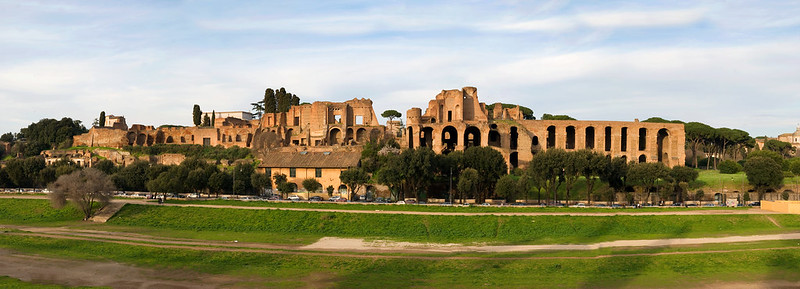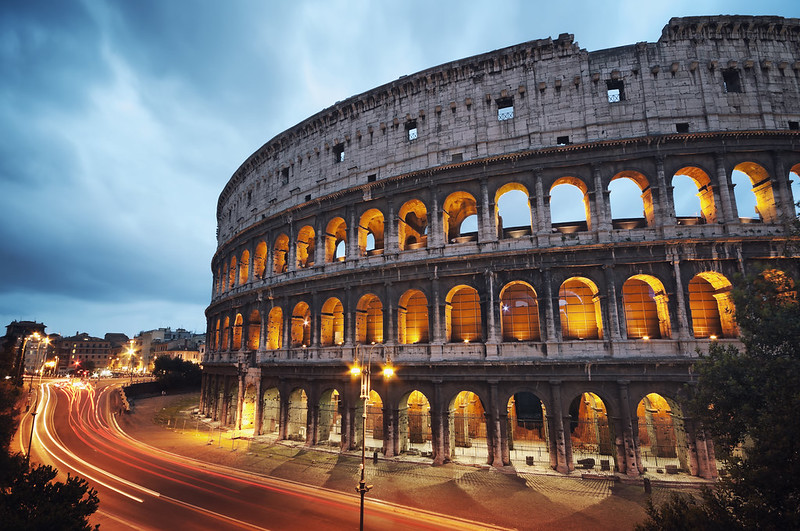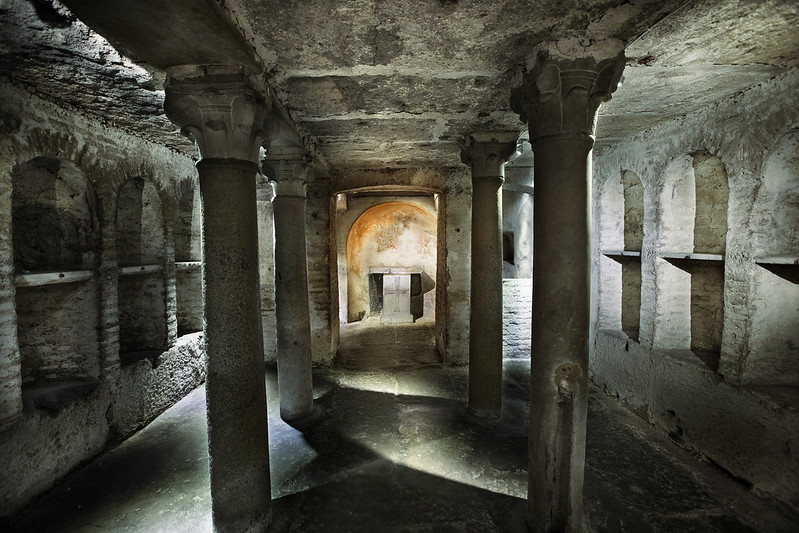
If you asked an average person to name two currently popular tourist attractions built by ancient Rome, you’d likely hear “The Colosseum and uh…” as the response. Someone who has previously taken a Rome tour, as I have, might think of the Forum or the Catacombs. But, beyond that, our collective awareness regarding what still remains from ancient Rome falls pitifully short of encyclopedic. We know one can find seemingly innumerable baths, gardens, bridges, arches, and pagan temples during a Rome vacation. But, we just can’t seem to recall a name for any of them. That’s why last year, before my 4th visit to Rome, my girlfriend and I planned an exclusively ancient Rome trip.

The Heart Of Rome
As one of the most popular tourist attractions in the world, the Coliseum serves as the centerpiece to countless Rome tours each year. My girlfriend and I did a Colosseum tour years earlier; but, we felt like we might have been too young to fully appreciate it. So, we paired our Colosseum tickets with admission to the Forum by purchasing a package online. I can only say, for my part, that I learned way more about ancient Rome during last year’s Rome trip than I had in first three Rome trips combined!

Who knew that the real name of the Coliseum was The Flavian Amphitheatre? I surely didn’t. And, what does Flavian even mean? We found out that it referred to the Flavius family, of which Emperors Vespasian, Titus, and Domitian were members. In turn, each ruler played an important role in the building of the Colosseum. Vespasian started original construction, Titus completed the structure, and Domitian made later modifications.
The Flavius family interested us so much that we ended up postponing our Forum tour and checking out the Flavian Palace instead. I don’t recommend doing this if you have never visited the Forum. But, otherwise, I found the immense wealth, power, and influence of the Flavius family so fascinating that I felt quite happy that we did.
Circus Maximus: Magnus Minimus
Little did we know that one of the planned stops on our ancient Rome tour, the Circus Maximus, sits in the valley below the Flavian Palace. At the very least, this simplified our transportation situation. And, the fact that you can enter the Circus Maximus for free made the second half of our day rather affordable. Rome tours can become expensive rather quickly if you don’t pay attention to your pocketbook. Thankfully, we only needed to pay for the Colosseum tickets, metro/taxi fares, and food on our first day sightseeing in Rome.
The Circus Maximus itself underwhelmed. I thought I would be able to envision Roman chariots racing around the oval track, invoking images of scenes from Ben-Hur in my mind. But, in all honesty, I only saw a wide-open park surrounded by some anonymous ruins. Maybe it would serve as a great place for a picnic. And, I’m sure Circus Maximus still serves as an amazing venue for victory celebrations whenever A.S. Roma or the Italian National Soccer Team wins some new hardware. However, we walked the length of the Circus Maximus and then headed back to our hotel for dinner and some much needed sleep.
Catacombs: What We Dug Up
The next morning, we set off for the Roman Catacombs. My girlfriend and travelling partner had seen them during a previous Rome tour. But, despite having several Rome vacations under my belt, this promised to be a new experience for me. I blame bad luck, ill timing, and just general forgetfulness for my never having visited Rome’s true underbelly.
First off, I will say that I’m glad I’m not claustrophobic. Slaves dug these tunnels and chambers by hand nearly 2 millennia ago and the result resembles a human-sized ant farm. Miles upon miles of cramped tunnels remain under the city streets of Rome; and, a tall person can stand up only inside the occasional burial chamber. So, if you fear tight spaces, you might want to skip this one.

With that said, we had a great time during this stretch of our Rome trip! And, I learned quite a bit during our guided Roman Catacombs tour. People often repeat the busted myth that Christians hid from Roman persecution in the catacombs, as though the Roman authorities had no idea that the underground burial places existed. Our tour guide explained that the Roman government knew about the catacombs; so, they actually represented a terrible place to hide. We learned that Antonio Bosio rediscovered the catacombs in 1586, that the word “catacombs” means “among the graves”, and so much more!
If you have a history buff in your group or if you just want to beat the heat during a summer Rome trip, we both highly recommend a Roman Catacombs daytrip as part of your own ancient Rome tour! Ours was so successful, we’re thinking about putting together an ancient Greece trip for next year!
